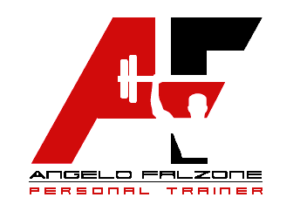Why Do My Capillaries Injured in My Arms?
If you have actually ever before experienced discomfort in your arms, particularly in your capillaries, you may be wondering what might be triggering this pain. While there can be different underlying reasons for this discomfort, it’s necessary to recognize the possible causes and also seek suitable clinical advice if needed. In this post, biodermalix we will certainly explore some of the common reasons your capillaries may harm in your arms and what you can do to alleviate the pain.
Poor Blood Blood Circulation
Poor blood flow is commonly a main wrongdoer for capillary pain in the arms. When your blood circulation comes to be jeopardized, it can result in pain and pain. Several aspects can add to inadequate blood circulation, including:
1. Less active Way Of Life: Lack of exercise as well as prolonged durations of resting or standing can impede correct blood flow.
2. Embolism: An embolism can create in a blood vessel, restricting blood circulation and triggering pain. This condition is known as thrombophlebitis.
3. Varicose Veins: Varicose capillaries are enlarged, twisted capillaries that can obstruct blood circulation and also cause discomfort and also swelling.
4. Outer Artery Disease (PAD): PAD happens when plaque accumulates in the arteries, decreasing blood flow to the limbs.
- Manage your weight as well as preserve a healthy way of life by incorporating routine exercise into your routine.
- Prevent resting or standing for prolonged periods; take breaks and move around.
- Seek advice from a healthcare professional for a diagnosis and suitable treatment if you think blood clots, varicose blood vessels, or outer artery condition.
Phlebitis
Phlebitis, additionally known as capillary swelling, can trigger pain and discomfort in the arms’ veins. This problem usually happens when an embolism types in a shallow vein, creating inflammation as well as swelling. Phlebitis can happen as a result of different reasons, including:
1. Injury: Trauma to the capillaries, such as needle puncture or bruising, can lead to phlebitis.
2. Infections: Infections in the blood vessels, such as cellulitis, can lead to inflammation and also discomfort.
3. Medical Procedures: Certain clinical procedures, such as intravenous (IV) therapy or catheter insertion, can cause phlebitis.
If you experience signs of phlebitis, it’s vital to look for clinical interest immediately. Therapy alternatives might consist of discomfort administration, anti-inflammatory medication, or, in extreme situations, medical intervention.
Overuse or Pressure
Overusing or straining your arms can result in muscle tiredness, which may cause discomfort in the veins. Repeated activities or excessive weight training can strain the muscles as well as surrounding frameworks, leading to discomfort. To avoid this sort of pain, it is essential to:
- Exercise proper functional designs throughout your everyday tasks and also work regular.
- Take regular breaks and stretch your arms and also wrists.
- Prevent excessive or incorrect weight training strategies.
- If you experience consistent pain, seek advice from a medical care specialist for an appropriate medical diagnosis and also assistance.
Underlying Medical Issues
In many cases, discomfort in the veins of the arms may be a signs and symptom of a hidden clinical condition. These conditions can include:
- Autoimmune Disorders: Conditions such as rheumatoid joint inflammation or lupus can create inflammation in the blood vessels, bring about pain.
- Thrombosis: Deep blood vessel apoplexy (DVT) is a severe problem where embolism develop deep within the veins of the arm or various other components of the body.
- Nerve Compression: Conditions like thoracic electrical enerflex outlet syndrome or repetitive strain injury can compress nerves and trigger discomfort in the arms.
Seek Medical Advice
If you are experiencing consistent or severe vein discomfort in your arms, it is important to speak with a health care professional. They can assess your signs, carry out diagnostic examinations if required, as well as supply ideal treatment choices based on the underlying reason.
Keep in mind, this article is for educational objectives only as well as must not change expert medical guidance. Constantly get in touch with a certified healthcare provider for exact medical diagnosis and also guidance.
